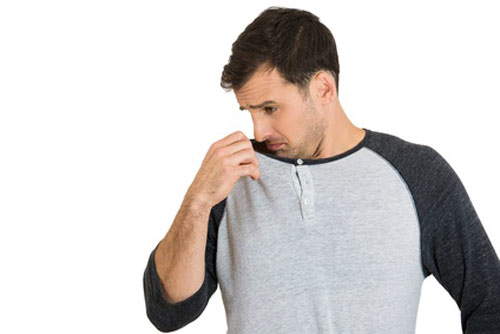Soap and water and antiperspirants are mostly powerless against body odor, which emanates from skin-dwelling, sweat-loving bacteria. Well, just target the bacteria, right? More easily said than done! Until recently, bacteria kept their malodorous secrets from nosy scientists.
Fortunately, scientists from the University of York and Unilever have sniffed out the gene pathway that accounts for the bacterial production of thioalchols, an important component of the characteristic body odor smell. Now that the gene pathway has been identified, scientists can look for ways to interrupt it, and so reduce body odor.
The scientists, led by Dan Bawdon, Ph.D., a molecular microbial biochemist at York, presented their results March 31 at the Society for General Microbiology’s Annual Conference in Birmingham. The presentation was titled, “Battling body odor: Transport and catabolism of malodor precursors by the underarm microbiota.”
The presentation explained how the scientists assessed the ability of over 150 bacterial isolates from underarm skin samples to produce malodorants. It also detailed how the scientists identified the genes encoding the proteins responsible for producing the thioalcohols, which are pungent in tiny amounts—as little as 1 part per trillion. One particular gene was found in Staphylococcus species that were shown to be strong thioalcohol producers.
To confirm that these genes were necessary and sufficient for malodor production, the team moved them into the lab bacterium Escherichia coli, which was then able to produce the body odor smell when grown in the presence of human sweat molecules.
“This work has significantly advanced our understanding of the specific biochemical processes involved in body odor production,” said Dr. Bawdon. “It was surprising that this particular body odor pathway is governed by only a small number of the many bacterial species residing in the underarm. We have opened up the possibility of inhibiting body odor formation using compounds designed to target the specific proteins controlling the release of malodorants.”
While these thioalcohols were long known to be involved in body odor, little was known about the way they were produced by bacteria in the underarm. Traditional deodorants and antiperspirants act by nonselectively killing underarm bacteria or by blocking our sweat glands, respectively. The researchers hope that this new research can be used to produce compounds that specifically target thioalcohol production, leaving the underarm microbiota intact.
Gavin Thomas, Ph.D., the group leader in the department of biology at the University of York, said, “[The] data are already having direct impact on the research being done [at Unilever]. The detailed molecular understanding of a process that is happening in our armpits every day and is completely dependent on bacteria is really exciting.”



